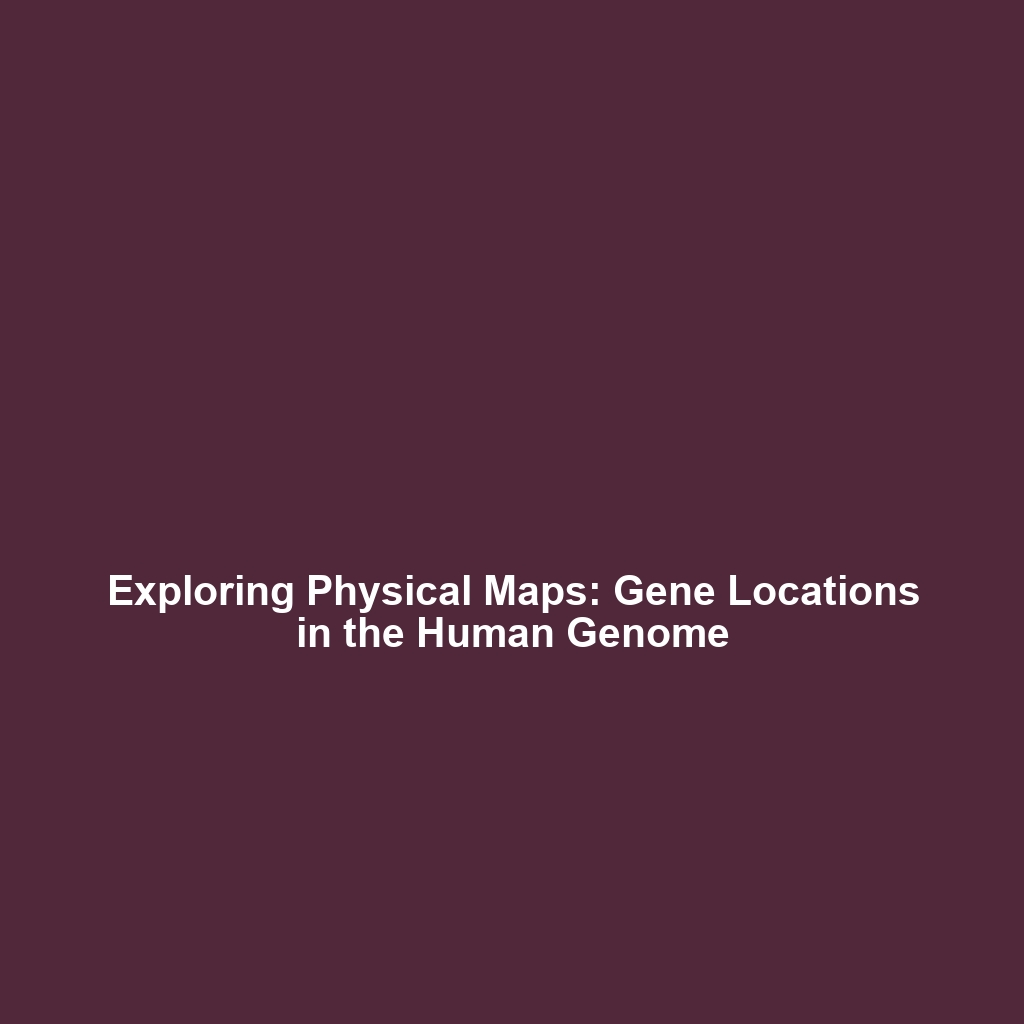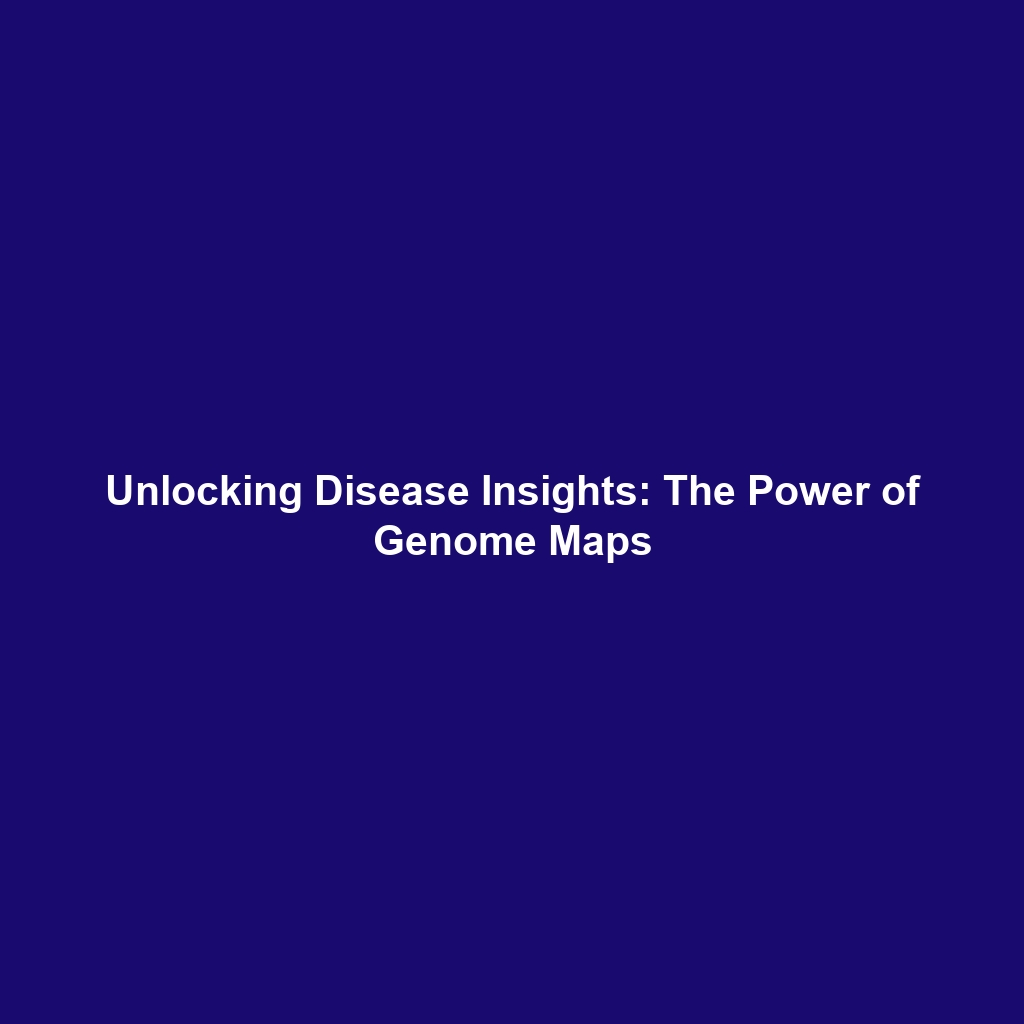Physical Maps: Identifying Gene Locations in the Human Genome Project
Introduction
Physical maps are essential tools in genomics, providing a detailed representation of the actual locations of genes along chromosomes. Utilizing landmarks such as restriction enzyme sites, physical maps have been integral to the Human Genome Project (HGP), which aimed to map the entire human genome. The significance of these maps lies in their ability to inform various genetic studies, disease research, and biotechnological applications. Understanding where genes reside and their physical relationships enhances our approaches to genetic disorders and therapeutic developments.
Key Concepts of Physical Maps
Physical maps serve as critical resources in genome mapping and provide a foundation for many genomic projects, including the Human Genome Project. Key concepts include:
- Restriction Enzyme Sites: These are specific sequences in DNA where restriction enzymes cut, creating recognizable fragments that help determine gene locations.
- Gene Clustering: Physical maps often reveal clusters of functionally related genes, aiding in understanding genetic networks and pathways.
- Cytogenetic Mapping: This technique combines physical maps with chromosome banding patterns to visualize gene locations more clearly.
Applications and Real-World Uses
The applications of physical maps in the context of the Human Genome Project are far-reaching. Here are some significant uses:
- Medical Research: Physical maps assist in identifying genetic markers associated with diseases, leading to better understanding and potentially new treatments.
- Genetic Counseling: Information derived from physical maps allows healthcare professionals to offer targeted advice based on genetic predispositions.
- Biotechnology: Physical maps are crucial in developing genetically modified organisms (GMOs) and understanding gene functions in various species.
Overall, the question of how physical maps are used in the Human Genome Project continues to evolve and expand.
Current Challenges
Despite their benefits, there are challenges in the study and application of physical maps:
- Precision Limitations: Variability in restriction enzyme efficacy can lead to inaccuracies in mapping.
- Complexity of Genomes: The intricate nature of eukaryotic genomes complicates mapping efforts, especially in repetitive regions.
- Data Interpretation: Analyzing and integrating data from physical maps with other genetic data can be challenging.
Future Research and Innovations
As research progresses, several innovations related to physical maps are likely to emerge:
- Next-Generation Sequencing (NGS): NGS technologies are poised to create highly accurate physical maps that surpass traditional methods.
- CRISPR-Cas9 Technology: Innovations in CRISPR may lead to more precise gene editing based on detailed physical mapping data.
- Big Data in Genomics: The integration of AI and machine learning is expected to enhance the analysis of complex mapping datasets.
Conclusion
Physical maps play a pivotal role in understanding the human genome, especially in the context of the Human Genome Project. They provide essential insights into gene locations and relationships, informing medical research and biotechnological advancements. Continued exploration in this field promises to deliver breakthroughs that could redefine genomic studies. For further information on related topics, explore our articles on Genetic Mapping and Advances in Genomics.

